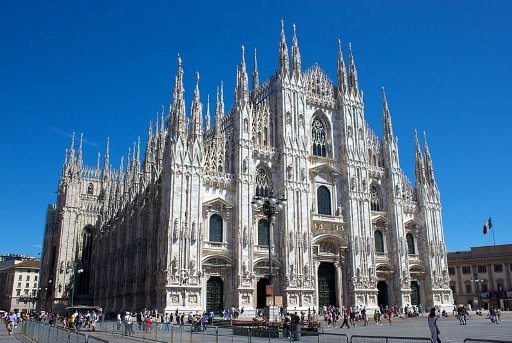The world’s famous churches to visit across the world stand as stone symphonies—where faith, politics, and artistic rebellion converge. These structures transcend religion, embodying humanity’s quest for meaning through audacious engineering and layered histories. For discerning travelers, they offer portals into the psyche of epochs, demanding not just visitation but contemplation.
Sagrada Família: Gaudí’s Fractal Gospel
Antoni Gaudi in the unfinished masterpiece in Barcelona redefines sacred geometry. Organic architecture of the basilica with its columns as trees of stone and light sifted through hyperboloid stained-glass vaults abode in anti-orthodoxy of the Gothic. Since 1882, its construction has mirrored societal upheavals: anarchists burned plans during Spain’s civil war; modern architects debate digital modeling versus hand-carving. The Glory Façade, slated for 2026 completion, encodes biblical parables in parametric design, proving architecture itself can be revelation. Non-EU travelers must secure Schengen visas months ahead to witness this metamorphosis.
Hagia Sophia: Istanbul’s Palimpsest of Empires
No site encapsulates clashing civilizations like Hagia Sophia. Justinian’s 6th-century engineers pioneered pendentives to suspend a 32-meter dome over Roman basilica ruins—a feat deemed “divine madness.” For 900 years, mosaics of Christ Pantocrator watched Orthodox rituals until Ottoman conquerors plastered them, hanging 7-meter calligraphic discs. Today, as a mosque-museum hybrid, whispered prayers echo strangely beside tourist murmurs. Such seismic sturdiness in construction of the building, as it has withstood 23 earthquakes, shows Byzantine genius that is even now studied by modern engineers. Entry requires navigating Türkiye’s digital visa portal.
St. Peter’s Basilica: The Vatican’s Engineered Ecstasy
The illusion is what dominates a skyline in Rome, and this can be achieved via the dome of Michelangelo. Its coffered interior appears weightless—a celestial sphere hovering 136 meters above St. Peter’s tomb. Bernini bronzed baldacchino curls up in the shape of frozen smoke, the incense, and under confessio, archeological diggings reveal the Nero circus, and early covert Christian tombs. The acoustics of the basilica turn papal masses into sensory feasts; they create reflections of the sounding material by the stone, turning whispers to be heard in the nave. Access demands Schengen authorization despite the Vatican’s sovereignty.
Church of the Holy Sepulchre: Jerusalem’s Fractured Sanctity
Christianity’s holiest site simmers with paradox. Six denominations share custody under a 1757 Ottoman decree, resulting in surreal coexistence: Coptic monks polish a shrine ledge while Armenian priests chant behind a 12th-century partition. The Immovable Ladder beneath a window symbolizes unresolved tensions—untouched since 1852. Recent infrared scans revealed hidden crusader frescoes beneath the Edicule, Christ’s purported tomb. Visitors navigating its dim chapels witness faith’s raw, contested vitality. Entry requires Israeli visas and West Bank permits.
Notre-Dame de Paris: Resilience in Ashes
Forgotten histories were unearthed by the 2019 fire which overthrew the spire of Viollet-le-Duc. Restorers found a 14th-century knight and his remains in a lead sarcophagus and medieval iron staples that had strengthened the nave-previously undocumented gothic engineering. The new rebuilt forest-like roof is made of 1,000 oak trees in ancient French forests, and new titanium supplying frameworks duplicate original shapes, with seismic strengthening. The fact that Notre-Dame managed to survive is also reminiscent of Paris itself: wounded, but fighting back. The 2024 reopening still requires the use of Schengen visas.
The Pilgrimage Protocol: Visa as Sacred Rite
Journeying to these famous churches to visit across the world demands bureaucratic devotion. Hagia Sophia’s Turkish e-visa processes in hours, yet Jerusalem’s dual Israeli-Palestinian permits take weeks. Atlys streamlines this modern pilgrimage, automating Schengen applications for Notre-Dame while flagging conflicts like Türkiye-Israel entry stamps. Their platform transforms visas from obstacles into enablers—ensuring travelers kneel before Bernini’s baldacchino rather than consulate queues.
To walk these aisles is to trace humanity’s spiritual DNA—where stone, light, and longing fuse into timeless testimony. With permissions secured, the pilgrim transcends tourism, entering living manuscripts of devotion



